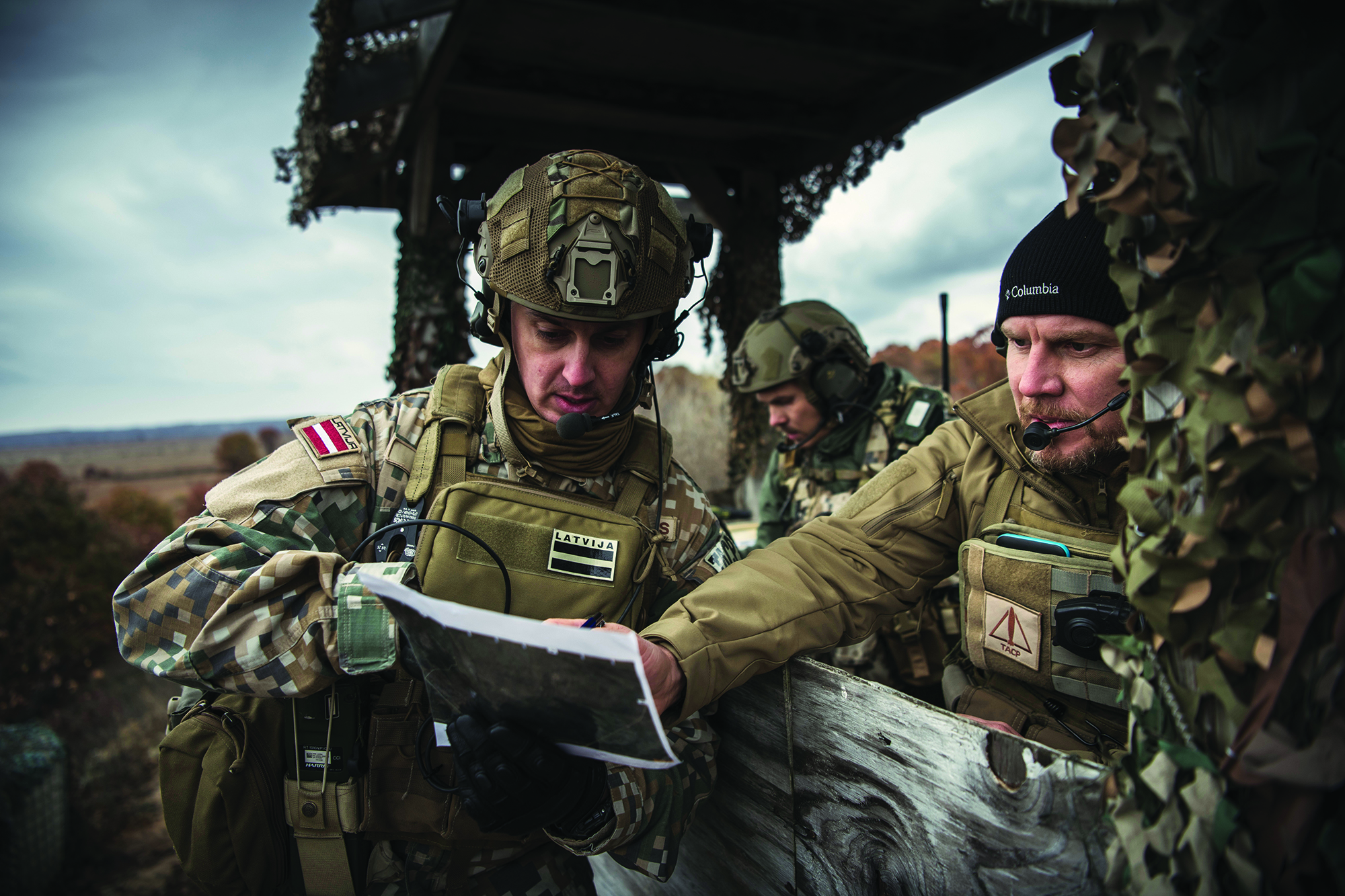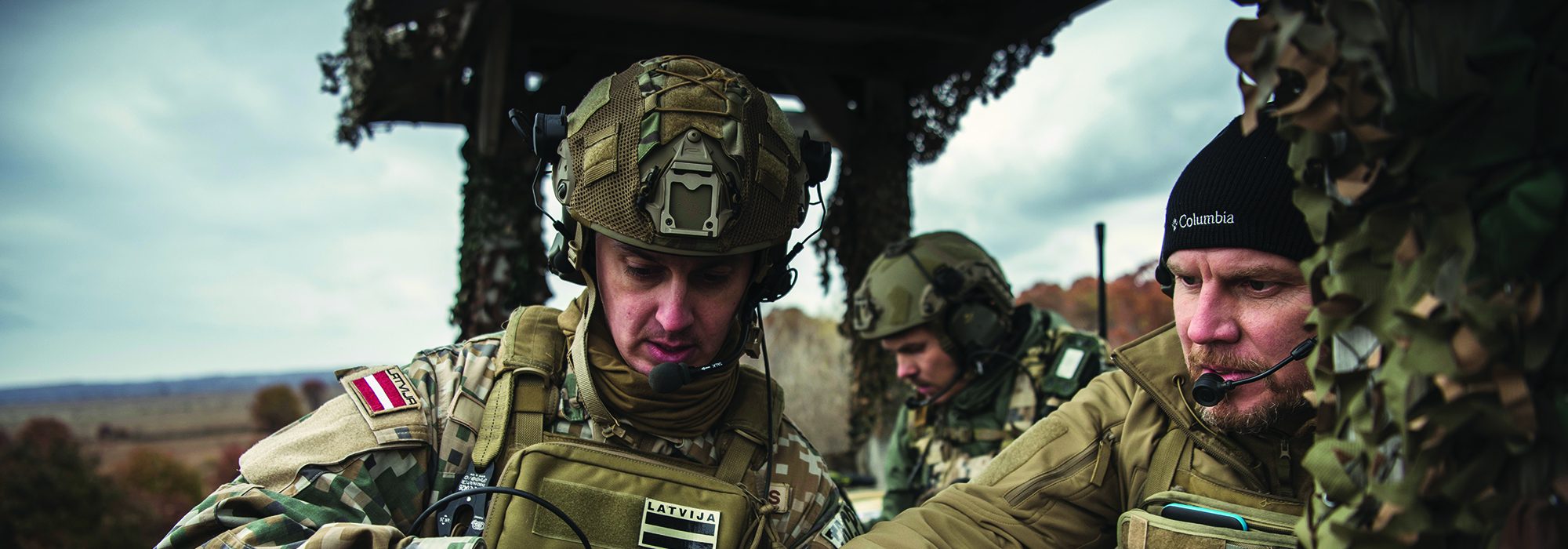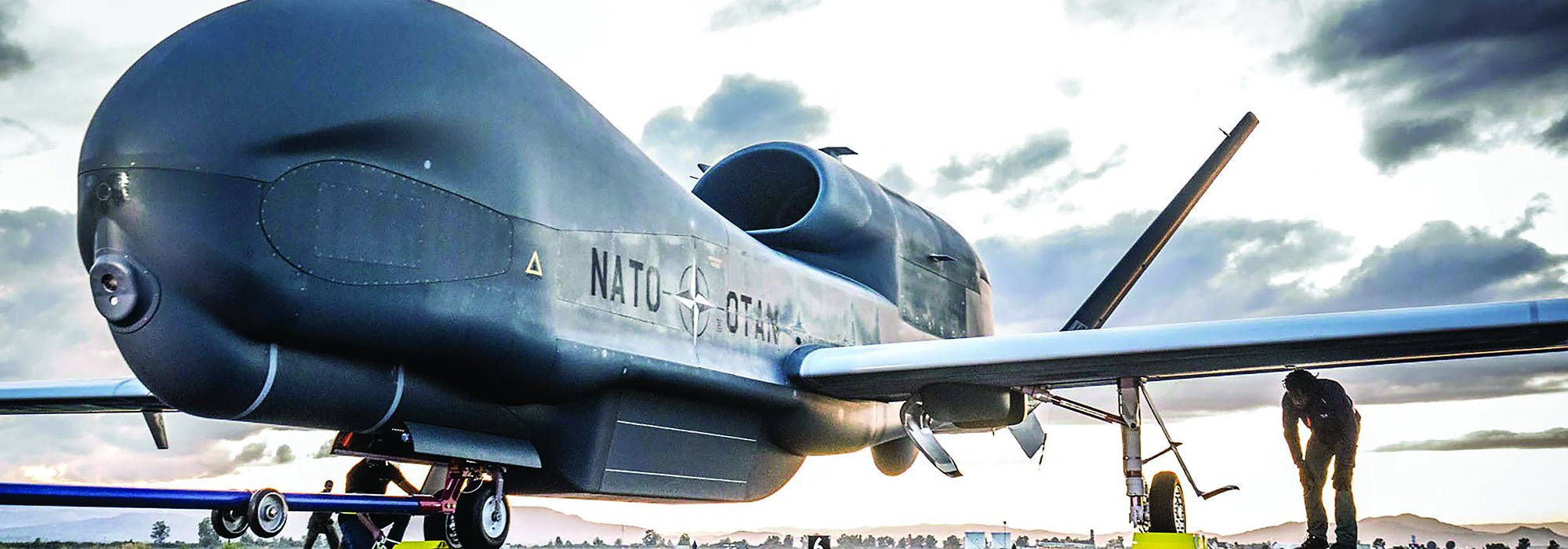After years of declining investment, NATO members’ spending on defense is rebounding. But frictions persist.
In his last speech to NATO before stepping down as US Defense Secretary in 2011, Robert M. Gates offered an exasperated and dark warning to his fellow defense ministers: Spend more on your own security, or the American taxpayer may lose patience with paying for European defense. At the time, the US accounted for 75 percent of all NATO defense spending, up from 50 percent only a few years earlier.
Flash forward eight years. Celebrating the 70th anniversary of NATO in London in December, alliance leaders proudly touted the fact that, today, eight countries are meeting NATO’s stated goal to invest 2 percent of Gross Domestic Profit in defense, up from only three nations when Gates issued his warning. Indeed, virtually every one of NATO’s 28 members has boosted defense spending. The alliance is back on track. Or is it?
French President Emmanuel Macron wondered on the eve of the summit if NATO had lost its way. “What we are currently experiencing is the brain death of NATO,” he declared in an interview with The Economist. Europe, he added, must “wake up” to the notion that it is on “the edge of a precipice,” and European nations must view themselves strategically not as members of an alliance dominated by the United States, but rather as part of Europe and a geostrategic entity unto themselves. Otherwise, he said, Europeans will “no longer be in control of our destiny.”
Asked whether he believed in NATO’s Article 5—which states that every NATO member will come to the aid of any member should it be attacked, he answered, “I don’t know.”
“What we are currently experiencing is the brain death of NATO.”French President Emmanuel Macron
Meanwhile, Turkey appears to be warming to Russia, NATO’s traditional adversary, and pulling back from its traditional close ties to the United States. Having not been allowed to join the European Union, Turkey has been flirting with Russia and China for more than a decade. In 2019, it took delivery of the Russian S-400 air defense system, prompting the United States and its partners in the F-35 fighter program to drop Turkey as a partner.
President Donald J. Trump has also roiled NATO. Campaigning for president in 2016, Trump openly questioned the value of the alliance, wondering if it was “obsolete.” NATO, he said, was “costing us a fortune.”
By then, Europe and Canada had already begun to increase spending, driven by Russia’s annexation of Crimea and parts of eastern Ukraine in 2014 and its ongoing “hybrid war” against the rest of that country. Though Ukraine is not a NATO member, nations that lived for decades under Russian domination in the former Soviet bloc, including the Baltic states of Estonia, Latvia and Lithuania, feared they might be next.
After Trump became president, his first Defense Secretary, retired Marine Gen. James Mattis, sought to reassure the world that NATO membership was the bedrock of American international power and influence, even as Trump continued to insist that other NATO members pick up more of the alliance’s financial burdens.
The tactic appears to have worked. NATO statistics released in November 2019, just ahead of the London Summit, shows Europeans and Canada increased their collective spending by a combined by 5.6 percent in the last five years. That includes a 1.7 percent in 2015, 3.0 percent in 2016, 5.7 percent in 2017, and about 4.5 percent each in 2018 and 2019.
From 2015 to 2019, non-US NATO countries increased defense outlays more than 20 percent to $302 billion, while US defense spending increased from $660 billion to $685 billion. In all, NATO members’ total defense investment could top $1 trillion in 2020. Today, while nine NATO-member countries meet or exceed the 2 percent target (including the US) seven are within 0.5 percent of the target, and all 28 have increased defense spending since 2014.
When it comes to investing in new equipment, the trends appear to be even better. NATO members have all agreed to invest 20 percent of their defense spending on new gear, and now, 16 NATO members are hitting the mark. Indeed, only Albania, the UK, and France have reduced their level of investment in weaponry since 2014. This separate accounting is useful because member states spend differently on pay, amenities and support for their troops, while the cost of equipment is largely equalized across the alliance.
At a lunch Trump hosted at the London meeting for the “2 percenters,” he lauded the progress in investment and took credit for spurring allies to spend more on defense. “Someday,” he said, “we’ll raise it to 3 percent and 4 percent, maybe.”
NATO Secretary-General Jens Stoltenberg celebrated the achievement, saying the growing number of 2 percenters “demonstrates we are making real progress.” More is to come: Most other NATO members “have plans in place to meet the 2 percent guideline by 2024,” he said. The European allies and Canada have added $130 billion to their defense budgets since 2016, he said, “and this number will be $400 billion by 2024. … So this is making NATO stronger.”
Of course, some allies are not following suit. Germany will still be under 2 percent of GDP in 2024, for example.
Whether all that new investment is because of the president is hard to determine. But in an interview with National Public Radio last summer, Garrett Martin, a NATO scholar at the American University School of International Service, said Trump may deserve credit. “Maybe there’s a bit more urgency now because he’s blunter than his predecessors in criticizing his European partners,” Martin said.
The US has also put its money where its mouth is. At the NATO ministerial meeting in Brussels last year, Stoltenberg noted that the US had increased spending on the European Deterrence Initiative by 40 percent since 2016. “Actions speak louder than words,” he said. The US Congress has strongly supported the alliance with numerous resolutions supporting NATO, and after the London Summit, Sen. Tim Kaine (D-Va.) introduced legislation that would bar the president from withdrawing from the alliance without Congress’ approval (See sidebar.)


Macron’s Charge
Amid the self-congratulation in London about NATO’s improved military spending, there was also friction, some of which was spurred by French President Macron’s remarks in The Economist.
“The unarticulated assumption is that the enemy is still Russia,” Macron said. While Russia remains “a threat,” he said, he suggested it is “no longer an enemy.” Rather, the common enemy of NATO, Macron argued, is terrorism, a challenge Russia shares, and on which it could be “a partner.”
Not surprisingly, that remark stirred concern among NATO’s Eastern European members, which view Russia’s efforts to undermine Georgia and Ukraine—like them former members of the Warsaw Pact—as a threat to their own independence.
In London, Macron declined to apologize for his remarks, saying instead he hoped that they stimulate new discussions of the alliance’s future. A debate is needed, he said, on how to “build sustainable peace in Europe.”
The alliance, he said, should be worried about “things other than finances and budgets.”
NATO leaders have all but begged Turkey to drop plans to buy the Russian S-400 air defense system, which they say is incompatible with the F-35. It could reveal secrets about the low-observable fighter and assist Russian technicians helping Turkey set up and operate the S-400 to enhance Russia’s defenses against those jets. Turkey has remained resolute about buying the system, however, and at at the Moscow Air Show last fall, Turkish President Recep Tayyip Erdoğan inspected Russian Su-35s. Turkish defense officials have said they could buy up to 24 of the fighters since they can’t acquire F-35s.
After the US, Turkey has NATO’s largest military with 435,500 troops, according to NATO statistics. Third is France, with 207,800 people in uniform, followed by Germany with 182,000 and Italy, at 178,000. Collectively, including the US, NATO members have 3.26 million people in military uniform.
Trump had a sidebar meeting with Erdoğan in London, saying afterward the two discussed the situation in Syria, Turkey’s offensive against the Kurds, and the cease-fire that froze hostilities in the region. The White House later said Trump urged Erdoğan to honor Turkey’s “alliance commitments.” Trump said he was “looking at” sanctioning Turkey over the S-400 dispute.
As recently as last summer, Trump toyed with economic punishment of Turkey under the Countering America’s Adversaries Through Sanctions Act, or CAATSA, but in recent months the discussion between the two countries has been about increasing trade, not limiting it. Turkey remains a major industrial partner on other defense programs, including Lockheed Martin’s F-16 (Turkey has 270 of the jets in several variants).
During the acrimony over the F-35/S-400 dispute, Turkish Defense Minister Mevlüt Çavoşoğlu suggested the US may be asked to leave Incirlik AB, Turkey, from which the US Air Force operates KC-135 tankers and other aircraft. The US has short-range nuclear weapons on Turkish soil, also, but neither side has said much about them.
Turkey also raised eyebrows at the summit when Erdoğan threatened to withhold support from a plan to increase the military capability of the Baltic States fronting Russia and Poland, a sign of his growing alliance with Moscow. But he did not follow through. Even though Turkey endured criticism for its incursion into Syria and its S-400 deal, NATO made no mention of either in its final declarations in London. Rather, it called out Russia for its “aggressive actions” and said improved relations and a “constructive relationship with Russia” would only happen “when Russia’s actions make that possible.”
“We, as an alliance, are facing distinct threats and challenges emanating from all strategic directions,” the NATO partners said in their final communiqué. Russia’s “aggressive actions constitute a threat to Euro-Atlantic Security.”
The partners said they would “address in a measured and responsible way Russia’s deployment of new intermediate-range missiles, which brought about the demise of the Intermediate-Range Nuclear Forces Treaty and which pose significant risks to Euro-Atlantic security.” NATO, they said, would also remain “a nuclear alliance,” but would continue to honor the nuclear nonproliferation treaty.
Russian spokesman Dmitri Peskov, reacting to the NATO communiqué, said NATO’s increased spending “reinforces” Russia’s concerns about the alliance, and makes the Russian frontier less secure, but he also said Russia will not get into “an arms race or spending race.” He said Russian President Vladimir Putin is “operating in a different way.”
Other threats called out by the alliance included “terrorism in all its forms and manifestations,” as well as challenges to “the rules-based international order” from both state and nonstate actors.” Instability beyond NATO’s borders is creating large-scale movements of refugees, NATO noted, along with the persistent threat from “cyber and hybrid threats.”
While China doesn’t border NATO, the members said they “recognize that China’s growing influence and international policies present both opportunities and challenges” the alliance needs to address. They pledged to “maintain our technological edge,” in all domains, including cyber and space, and improve the resilience of member nations to attacks of all kinds.”
As for Macron’s worries about Article 5, nothing happened. Despite the frictions, NATO members left intact the glue that holds the alliance together and gives it its strategic deterrent effect, reaffirming their “solemn commitment” to Article 5. Stoltenberg, wrapping up the meeting, said members “stand together, all for one and one for all,” and that commitment to Article 5 is “ironclad.”

Bill Would Give Senate Final Say on NATO Withdrawal
A bill passed by the Senate Foreign Relations Committee would prohibit a US president from unilaterally withdrawing from NATO without the approval of Congress.
“Recent actions have raised serious questions among our allies about America’s commitment to NATO,” said Sen. Tim Kaine (D-Va.), the bill’s sponsor. “This sends a strong message that, after 70 years, Congress sees the continuing vitality of the alliance.”
If passed, the measure would require the president to alert the Senate Foreign Relations and House Foreign Affairs committees within 48 hours of any action to withdraw from the alliance and to seek the advice and consent of the Senate before he could exit NATO. The bill also allows the Senate Legal Counsel and House General Counsel to challenge the administration in court if the president tried to unilaterally quit NATO.
Surveys suggest the public supports that position. An April 2019 survey of more than 2,400 registered voters conducted by the Program for Public Consultation at the University of Maryland found:
- 83 percent of respondents favored the US staying in NATO, including 90 percent of Democrats, 77 percent of Republicans, and 76 percent of those who said they voted for President Trump.
- 50 percent agreed that the US should “remain part of NATO but reduce US military investments in Europe to bring them more in line with the level that Europeans make.”
- 35 percent endorsed pressing NATO allies to do more, but without threatening to leave the alliance.
- 12 percent said the US should press NATO allies “to spend more on their military and say that if they do not, the US will disengage from Europe militarily and possibly withdraw from NATO.”


